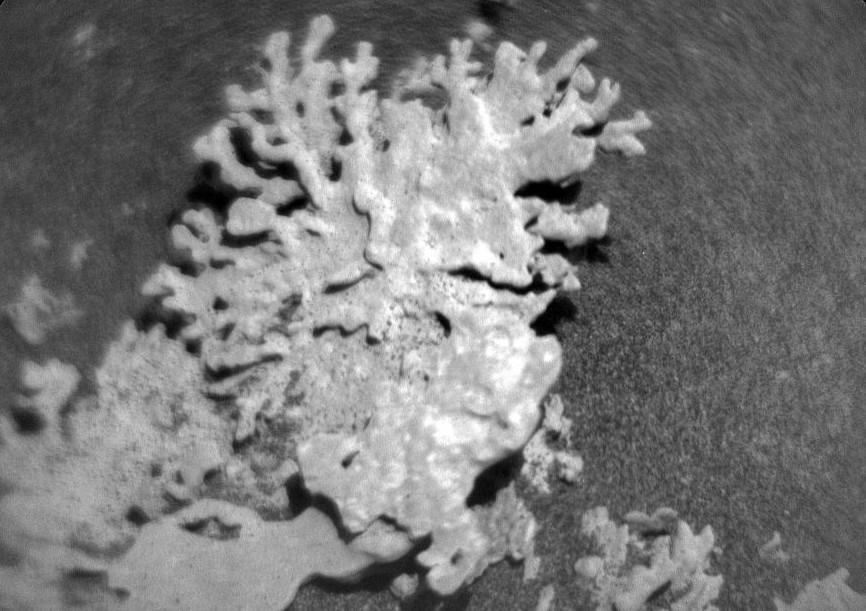
Coral-shaped rock spotted on Mars, NASA shares pic
NASA’s Curiosity Mars rover has sent back some fascinating images of the Martian surface, and this time, it’s a rock that has left scientists and space enthusiasts alike in awe. The rover has discovered a coral-shaped rock on the Martian surface, which looks uncannily like a piece of coral from our own planet.
The rock was found in the Gale Crater, a large impact basin on Mars, which is a region that has been of great interest to scientists due to its geological significance. According to NASA, the recently discovered coral-like rock is believed to be around a billion years old, making it a fascinating find that could provide valuable insights into the planet’s geological history.
The images of the coral-shaped rock were captured by the rover’s ChemCam, a laser-induced breakdown spectroscopy (LIBS) instrument that is used to analyze the chemical composition of rocks on the Martian surface. The images are in black and white, which is a result of the instrument’s ability to capture data in the visible and near-infrared parts of the spectrum.
The coral-shaped rock is a fascinating find for several reasons. Firstly, it is a testament to the geological diversity of Mars, which is a planet that has been thought to be largely barren and inhospitable for life. The discovery of a rock that resembles coral suggests that there may have been water present on the planet at some point in the past, which is significant because water is a key ingredient for life.
Secondly, the coral-shaped rock could provide valuable insights into the geological history of Mars. The fact that it is a billion years old suggests that it may have formed during a period of time when Mars was much more hospitable to life. By studying the rock, scientists may be able to learn more about the conditions that existed on Mars during that time, and how they may have changed over time.
Finally, the coral-shaped rock is a reminder of the importance of exploration and discovery. The Curiosity rover has been exploring Mars since 2012, and it has made many significant discoveries about the planet’s geology and climate. The discovery of the coral-shaped rock is just the latest example of the rover’s ability to uncover new and exciting information about our neighboring planet.
So, what does the future hold for the Curiosity rover and its exploration of Mars? NASA has announced plans to extend the rover’s mission until at least 2025, and it is likely that the rover will continue to make new and exciting discoveries about the Martian surface.
In conclusion, the discovery of the coral-shaped rock on Mars is a significant find that could provide valuable insights into the planet’s geological history and the possibility of life on the Red Planet. The Curiosity rover has once again demonstrated its ability to uncover new and exciting information about Mars, and we can’t wait to see what other discoveries it will make in the future.
Source: https://www.jpl.nasa.gov/images/pia26634-curiositys-chemcam-views-a-rock-shaped-like-coral/






